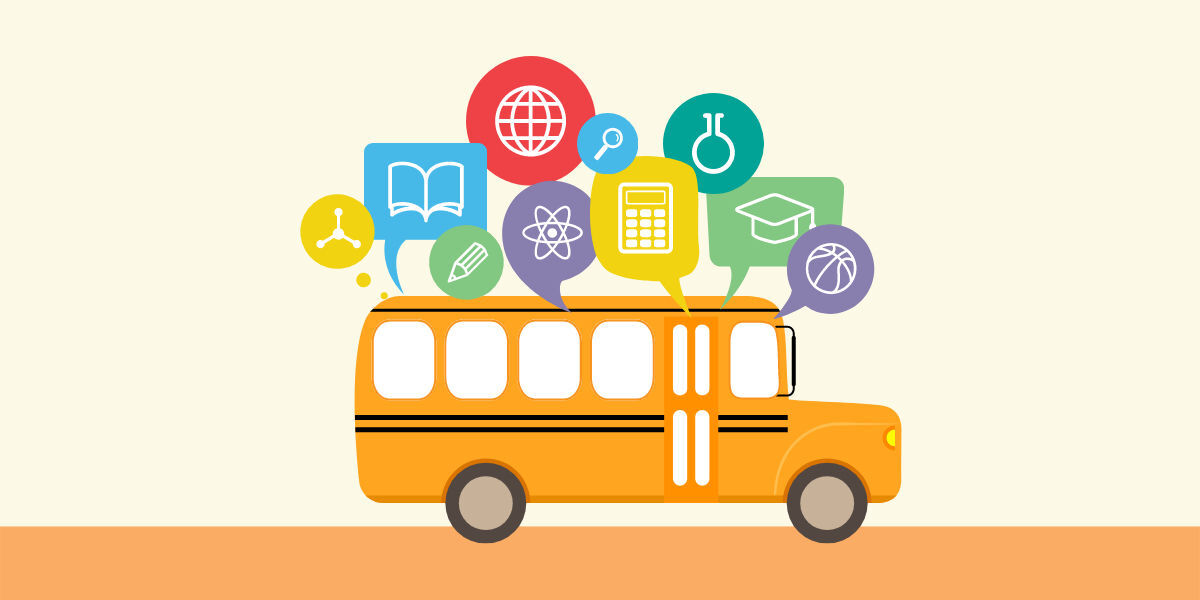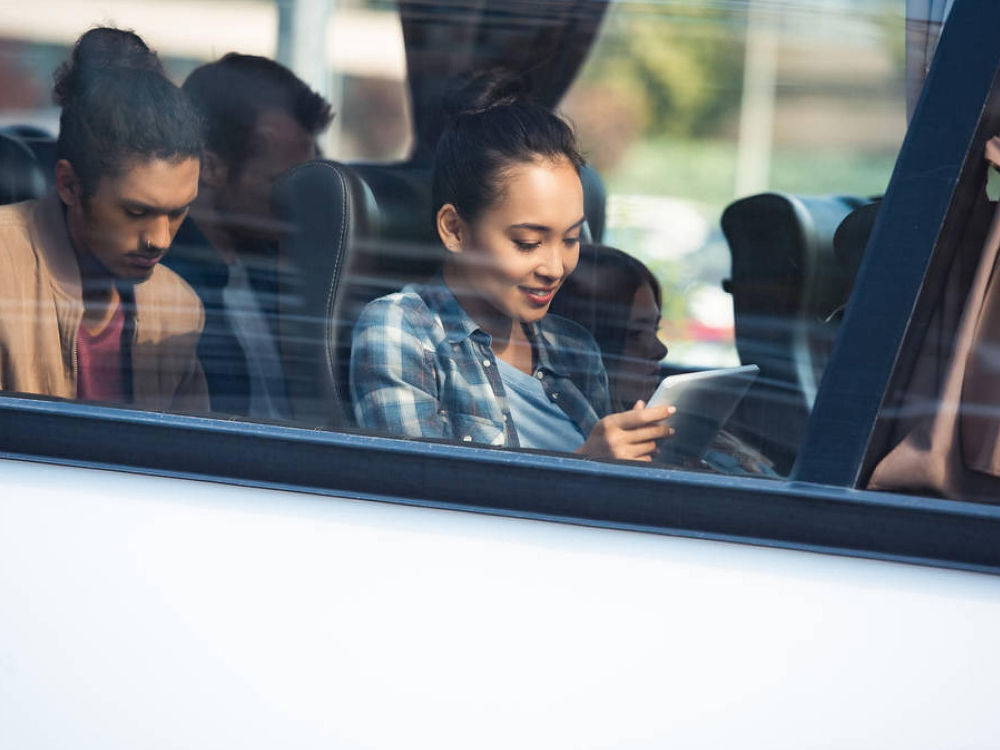
ABOUT SCOTT FRANKLAND
Scott Frankland is Head of Content at Sengerio. His spirit of inquiry leads him to the world of transportation and mobility to connect with the industry’s leading experts and shine a light on the hot topics.

Academic institutions such as schools and universities present an interesting case when it comes to transportation programs.
From the bustling urban city centers to the quieter rural areas, every campus displays a unique ecosystem that has its own transport challenges.
One of these challenges is addressing the large proportion of students that have limited options when it comes to returning home during academic breaks.
More often than not, students may have to endure longer journeys that consist of several transfers which are usually more difficult to manage— or even turn to using their own private vehicle. Alternatively, it might be a parent or relative who has to make the round trip to collect their child. Either way, this can be a cumbersome task.

In this article, Sengerio observes an interesting case that is closing this gap in colleges’ transportation networks by providing transport solutions for students to get home during academic breaks.
Based in the United States, BreakShuttle is a provider of academic break transportation services for students wanting to return home during academic breaks in a safe, reliable, and cost-effective way.

The company partners with a total of 12 colleges and universities throughout New England, the Midwest, Mid-Atlantic, the South, and Texas to provide on-demand services to students wanting to go home at the end of academic terms.
The program was launched by a Middlebury College student back in 2012 but was acquired by the national transportation consultancy Wells + Associates in 2017.
Wells + Associates has a reputable background in improving transportation systems on college campuses. This year marks Wells + Associates’ 30-year anniversary of implementing sustainable and cost-effective transportation solutions to modernize networks across the United States.
To learn more about BreakShuttle’s innovative program, Sengerio had the pleasure of talking with the company.
When asked about the underlying inspiration of the program, the company highlighted that
The program was born out of parent associations that were looking for an alternative way to get their kids home during the school breaks, but the distance can be problematic for parents to drive to and from the university or college.
Particularly in states such as Texas that have a greater landmass, it can be both difficult and impractical for parents to make the journey to collect their children. A great example of this is Texas Tech University, one of BreakShuttle’s partner institutions, which is located in the heart of Lubbock. Parents coming from other metropolitan areas can face an exhaustive journey to the remotely-located city.
For this reason, the Parent Association at Texas Tech University convened to address the need for a more efficient way for students to travel between the university without the parents having to make the cumbersome trip. The solution to this was BreakShuttle, which eliminates the need for parents to make the trip.

Future students have a plethora of factors to consider when choosing where to study.
As well as attaining a sublime education to pursue their future careers, students observe the many other perks a school can offer to improve the overall experience.
Schools are continuously improving these important factors so that they can attract a wider population to their campus, and transportation has become a crucial part of the decision-making process when choosing which school to attend. For this reason, providing the additional benefit of a guaranteed, reliable trip home during academic breaks is certainly an advantage for schools.

BreakShuttle works together with its partner institutions to establish a transportation program to implement these types of services. This includes understanding the demographic of students that may want to use the services so the most suitable routes can be planned. As the company explains
When a school reaches out to create a transportation program, they might not know where they need to connect. So the team at BreakShuttle can make a zip code plot to determine where they are coming from. Using these data, we’re able to understand where it makes more sense to have a route that will fill a bus. We can make more direct routes because we have a very specific population that we’re serving.
Once we’ve figured out the routes we market with the school to determine where the bus stops might be. This could include places like an airport even if it doesn’t necessarily mean that that’s where all the students are coming from.
BreakShuttle strives to work transparently with schools and transport providers to create services that meet the requirements of the passengers. This includes creating tickets with fair prices that match students’ budgets and providing excellent customer service to provide the necessary support for a school’s community.
Currently, BreakShuttle partners with ten to twelve different regional charter companies to provide their services. These companies are typically located near the school campus or close to the end destination of the scheduled journeys.
Many of the company’s close-knit relationships with these transport providers were formed several years ago. In fact, when BreakShuttle is in search of a new operator for a specific area, the company often asks its partners for recommendations for potential partners.

Once potential transport operators have been identified, the company can observe whether the operator has the ideal capacity to carry out future services with the highest standards. This includes looking at the size and quality of the fleet, the customer feedback, and having a general conversation with providers to attain a better understanding of how they operate.
As BreakShuttle expands its services across the US, the company aims to add more transport providers to its partner network. Although the company doesn’t have a formal bidding/ application process, it welcomes being approached by operators who may wish to offer their services.
In some cases, schools may already have an existing shuttle program in place but lack the resources to meet the demand of a school’s community wanting academic break transport services. This is normally due to the additional costs and means to sustain the program, such as adequate marketing and finding the most suitable transport providers.
In these circumstances, BreakShuttle can handle the management of these shuttle programs to provide the necessary services while relieving the school’s transportation services of the additional workload; which was the case with another of BreakShuttles partner schools— the University of Kentucky.
When it comes to marketing the services on campus, all the transport information including that of BreakShuttle is integrated during the orientation period at the start of each academic year. In addition, BreakShuttle maintains its close relationship with parent associations and other relevant contacts to ensure that they are aware of the services they can pass on to them.
If equity and income disparity may limit certain groups of students from accessing the services, schools can supplement or subsidize the journey to ensure that the connections are still in place for these students to get home.

We focus on making sure freshmen and other new students are aware of all the transport options. So both the parent associations and transportation departments will guide people through all the information that they need where BreakShuttle is included.
During the orientation period, the company encourages students to sign-up to receive information about routes they may be interested in, get notified when the route is set, and know when tickets will be available to buy.

For the students that aren’t freshmen, they continue to receive BreakShuttle’s updates if they have previously used the service. If they haven’t used the program in the past, the information is still marketed throughout school campuses via newspapers, newsletters, digital signs, and even cross-campus apps.
Given that the pandemic has greatly reduced the total number of students on campus, BreakShuttles services are due to continue this fall.
The company is working hard to create a safety policy that integrates the many different policies that are put forward by their partners, this includes the Centers for Disease Control and Prevention (CDC), partner institutions, transport providers, and state recommendations.
We’re navigating our preparation to understand what the universities’ requirements are going to be. We need to understand how many students are going to be on campus that could potentially use the service.
But also how many can be on a bus? What are the requirements for that? I think we have to wait and see. In the meantime, we continue our close relationship with university administrators to keep updated.

The pandemic has changed the way many people choose to travel, and while previously universities didn’t allow freshmen to drive to campus, this could change once schools reopen again. As BreakShuttle pointed out
We’re seeing a shift now because of the pandemic. Universities are opening up to allow freshmen and other students to bring their cars to the campus so that they have more flexibility.
I think as things progress, we’re going to start to see that the BreakShuttle services are going to help reduce some of those car trips.
BreakShuttle complements the broader scope of student transport programs that aim to improve accessibility to the campus while reducing the total number of single-occupancy vehicles that ultimately conserves spaces, reduces traffic volume, and supports their sustainability goals.
Mary Markle, Leadership & Engagement at Susquehanna University, told Sengerio about the university’s partnership with BreakShuttle and how they are working together to provide a solution for the returning students later this year.

In our years of partnership with Breakshuttle, they have always been adaptive to the changing transportation needs of our students. As we faced unprecedented challenges this past year, Breakshuttle and Susquehanna worked together to come up with an agreement that was financially feasible, and by which we could continue to provide service to students whenever possible.
I and my Breakshuttle representative were in frequent contact as circumstances seemed to change almost daily. Yes, we took care of business but we also made a point to check in with each other on how everyone was doing, students and staff of both entities. That’s what a longstanding business relationship based on trust and respect should be and we are fortunate to have that with Breakshuttle.
BreakShuttle’s innovative solution ultimately provides a great way for students to get home during college breaks. Not only is this beneficial for the students but it also reflects well on the university— in its essence, BreakShuttle somewhat brings university closer to home.
In addition, it goes hand-in-hand with universities’ growing communities to accommodate a demographic of students that may be coming to campus from even greater distances.
By mass transporting students when term-time ends, BreakShuttle is able to minimize the need for students to access campuses with a private vehicle which, as a result, benefits the rest of a school’s transport system as a whole.

ABOUT SCOTT FRANKLAND
Scott Frankland is Head of Content at Sengerio. His spirit of inquiry leads him to the world of transportation and mobility to connect with the industry’s leading experts and shine a light on the hot topics.